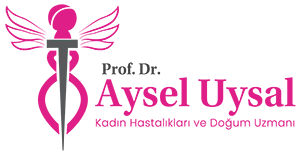Urinary Incontinence
Causes, Types, and Management
Urinary incontinence is a common condition that affects millions of people worldwide, particularly women and older adults. It refers to the involuntary leakage of urine, which can range from occasional to severe and significantly impact a person's quality of life. Understanding the causes, types, and management options for urinary incontinence is crucial for effective treatment and improved bladder control.
Causes of Urinary Incontinence
Urinary incontinence can be caused by various factors, including:
- Weak Pelvic Floor Muscles: The muscles that support the bladder and urethra can weaken due to aging, childbirth, or certain medical conditions.
- Nerve Damage: Conditions such as diabetes, stroke, or multiple sclerosis can affect nerve signals to the bladder, leading to incontinence.
- Prostate Issues: In men, an enlarged prostate gland or prostate surgery can contribute to urinary leakage.
- Hormonal Changes: Women may experience incontinence during menopause due to hormonal fluctuations affecting bladder control.
- Medications: Certain medications, such as diuretics or those that relax bladder muscles, can cause or worsen incontinence.
Types of Urinary Incontinence
There are several types of urinary incontinence, including:
- Stress Incontinence: Leakage occurs during activities that put pressure on the bladder, such as coughing, sneezing, or lifting heavy objects.
- Urge Incontinence: Also known as overactive bladder, this type involves a sudden and intense urge to urinate, often leading to leakage before reaching the toilet.
- Overflow Incontinence: The bladder doesn't empty completely, causing constant dribbling or leakage.
- Functional Incontinence: Physical or cognitive impairments prevent a person from reaching the toilet in time despite having normal bladder function.

Management and Treatment
The management of urinary incontinence depends on the type, severity, and underlying causes. Here are some common approaches:
- Behavioral Therapies: Pelvic floor exercises (Kegel exercises), bladder training, and fluid management techniques can improve bladder control.
- Lifestyle Modifications: Avoiding caffeine, alcohol, and spicy foods, maintaining a healthy weight, and quitting smoking can reduce incontinence symptoms.
- Medications: Anticholinergic medications, beta-3 agonists, or topical estrogen (for women) may be prescribed to manage overactive bladder symptoms.
- Medical Devices: Urethral inserts, pessaries, or absorbent pads can provide temporary support or protection against leakage.
- Surgery: In cases where conservative treatments are ineffective, surgical options such as bladder sling procedures, urethral bulking agents, or artificial urinary sphincter implantation may be considered.
Urinary incontinence is a treatable condition, and many individuals can achieve significant improvement in bladder control with the right interventions. It's essential to consult with a healthcare provider for proper evaluation, diagnosis, and personalized treatment recommendations based on individual needs and preferences.






